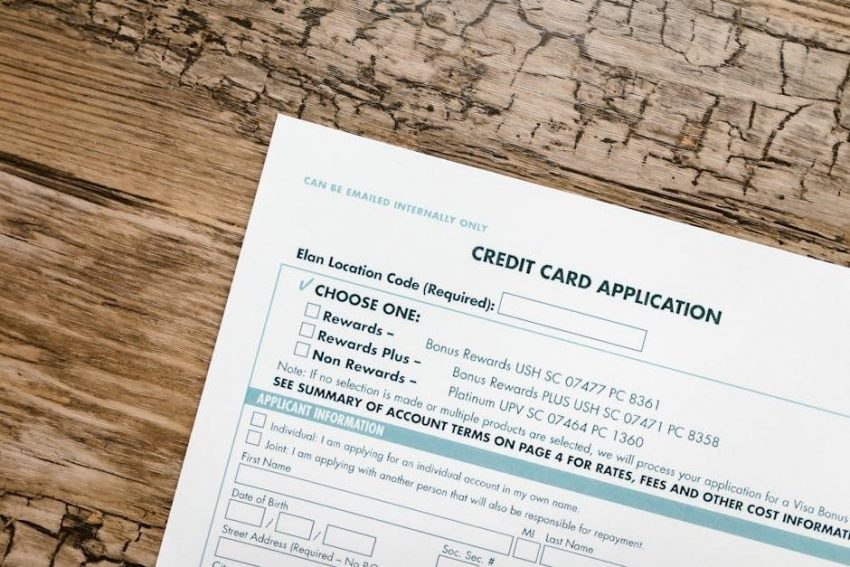The Ontario Rental Application Form 410 is a standardized document designed for rental applications in Ontario, Canada. Created by the Ontario Real Estate Association (OREA), it streamlines the rental process for landlords and tenants, ensuring compliance with provincial tenancy laws. This form collects essential information, including personal details, rental history, and financial data, to facilitate fair and transparent tenant screening. It is widely recognized as a comprehensive tool for evaluating potential tenants while protecting the rights of all parties involved.
1.1 Purpose of the Form
The Ontario Rental Application Form 410 serves as a standardized tool to streamline the rental application process. Its primary purpose is to collect essential information about potential tenants, enabling landlords to assess suitability for a rental property. The form ensures compliance with Ontario tenancy laws, promoting fairness and transparency in tenant screening. It gathers details such as personal information, rental history, employment, and financial status, aiding landlords in making informed decisions. By standardizing the application process, Form 410 helps protect both landlords and tenants, ensuring a clear and consistent approach to renting properties across Ontario.

1.2 Importance for Landlords and Tenants
The Ontario Rental Application Form 410 holds significant importance for both landlords and tenants. For landlords, it provides a structured method to evaluate potential tenants, reducing risks by verifying credibility and financial stability. Tenants benefit from a fair and transparent process, ensuring their personal information is handled securely. The form fosters trust by outlining expectations and requirements clearly, protecting both parties from potential disputes. Its standardized format ensures consistency, making it easier for landlords to compare applicants and for tenants to understand what information is needed. This mutual benefit underscores its value as a foundational document in Ontario’s rental market.

Structure of the Rental Application Form 410
The form is organized into clear sections, including property details, applicant information, and required documentation, ensuring a streamlined process for both landlords and tenants.
2.1 Property and Rental Details
This section outlines the specific details of the rental property and the terms of the tenancy. It includes the property address, the date the rental period is expected to begin, and the monthly rent amount. Additionally, it specifies the term of the rental agreement, whether it is a fixed-term lease or a month-to-month arrangement. Applicants are also required to provide information about parking availability and any associated costs. This section ensures clarity on the rental terms and helps prevent disputes by establishing a clear understanding of the agreement. It is essential for both landlords and tenants to review this section thoroughly to ensure all details are accurate and agreed upon.
2.2 Applicant Information
This section requires applicants to provide their personal details, ensuring landlords can verify their identity and assess their suitability as tenants. It includes full names, contact information, and permanent addresses. Applicants must also disclose their marital status, number of dependents, and citizenship status. Additionally, this part of the form asks for employment details, such as job titles, employers’ names, and lengths of employment, to evaluate financial stability. Applicants are also required to list emergency contacts and provide references, which may include previous landlords or employers. This comprehensive approach helps landlords make informed decisions while ensuring transparency in the rental application process.

2.3 Required Documentation

Applicants must submit specific documents to support their rental application. This typically includes valid photo identification, proof of employment, and recent bank statements or pay stubs. Additionally, applicants are often required to provide rental history, with contact information for previous landlords, to verify their tenancy record. Employment letters, tax returns, or other financial documents may also be requested to assess income stability. In some cases, applicants may need to provide character or professional references. This documentation ensures landlords can evaluate the applicant’s credibility and financial reliability, helping to make an informed decision while maintaining compliance with Ontario’s rental regulations;

Key Sections of the Form
The form includes sections for personal information, rental history, employment, and financial details. Each section contains specific fields to ensure a comprehensive evaluation of the applicant.

3.1 Personal Information
The Personal Information section of Form 410 requires applicants to provide their full name, current address, contact details, and identification information. This includes a valid government-issued ID, such as a driver’s license or passport, to verify identity. Applicants must also disclose their marital status and the number of occupants intending to live in the rental property. This section ensures landlords can accurately assess the applicant’s suitability and maintain clear communication throughout the rental process. The information collected is essential for evaluating the application fairly and transparently, aligning with Ontario’s tenancy laws and privacy standards.
3.2 Rental History
The Rental History section of Form 410 requests detailed information about the applicant’s past tenancies. This includes the addresses of previous rental properties, the duration of each tenancy, and the monthly rent paid. Applicants are also required to provide the names and contact details of their previous landlords or property managers. This section helps landlords assess the applicant’s reliability and rental behavior, such as punctuality of rent payments and maintenance of the property. Additionally, applicants may be asked to explain any gaps in their rental history or provide references if they are first-time renters. Accurate and complete information in this section is crucial for landlords to make informed decisions.
3.3 Employment and Financial Information
The Employment and Financial Information section of Form 410 is critical for assessing an applicant’s financial stability and ability to pay rent. It requires details about the applicant’s current employer, job title, length of employment, and monthly income. Additionally, applicants must disclose other sources of income, such as self-employment, investments, or government assistance. The form also asks for bank account information to verify financial standing. Applicants may be required to provide proof of income, such as pay stubs or bank statements, and explain any gaps in employment or financial inconsistencies. This section helps landlords evaluate the applicant’s financial reliability and ensure they can meet rental obligations consistently. Accurate and complete information is essential for a fair assessment.

Legal Considerations
The Ontario Rental Application Form 410 is governed by the Ontario Tenancy Act and ensures compliance with provincial rental laws. It emphasizes fair housing practices and privacy protections, balancing tenant rights with landlord responsibilities while adhering to legal standards.
4.1 Compliance with Ontario Tenancy Laws
The Ontario Rental Application Form 410 is designed to comply with the Residential Tenancies Act, 2006 (RTA), ensuring landlords and tenants adhere to provincial tenancy regulations. This form guarantees transparency by requiring accurate rental details, lease terms, and legal disclosures. It prohibits unlawful questions, maintaining fairness and preventing discrimination. By following the RTA, the form protects both parties’ rights, ensuring lawful rental agreements. Compliance is crucial for avoiding disputes and penalties, making it a reliable tool for landlords and tenants seeking to establish a legally sound tenancy relationship in Ontario.

4.2 Privacy and Data Protection
The Ontario Rental Application Form 410 places a strong emphasis on privacy and data protection, ensuring that personal information collected from applicants is handled securely. Under Canadian privacy laws, including the Personal Information Protection and Electronic Documents Act (PIPEDA), landlords are required to safeguard sensitive data such as financial details, rental history, and identification documents. The form explicitly outlines how personal information will be used and shared, obtaining consent from applicants. Tenants have the right to access their information and request corrections. Misuse of this data can lead to legal consequences, making it essential for landlords to adhere to privacy regulations when processing rental applications.

Best Practices for Completing the Form
When completing the Ontario Rental Application Form 410, it is essential to provide accurate and thorough information to ensure a smooth process. Applicants should carefully review each section, ensuring all fields are filled out legibly and completely. Supporting documents, such as proof of employment, financial statements, and rental history, should be organized and attached as required. Double-checking for errors or omissions can prevent delays. Landlords are advised to maintain transparency by clearly outlining the criteria for tenant selection and ensuring compliance with privacy laws. Both parties should retain a copy of the completed form for their records. Timely submission and open communication can enhance the overall efficiency of the rental application process.

